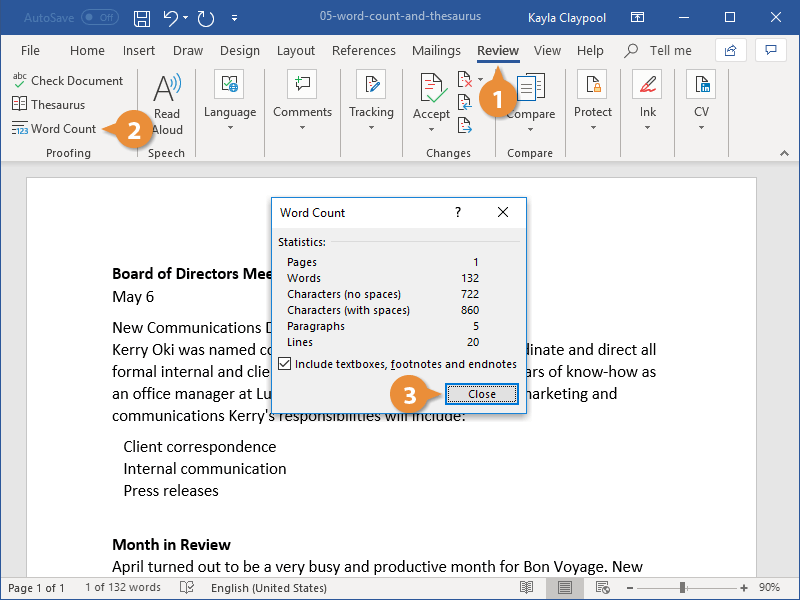


- Microsoft word word count with coding how to#
- Microsoft word word count with coding code#
- Microsoft word word count with coding free#
Summary: Dynamic word counts for your entire document are easy to get when you use using fields. To get the word count, we first need to remove all the extra spaces (such that there is only one space character between two words) and then count the total.
Microsoft word word count with coding code#
It appears that when using a Range, the IncludeFootnotesAndEndnotes parameter is not available. Unfortunately the NumWords field code does not have an option for section counts. It doesn't work, giving an error that there are too many parameters. Marking up the package.json so the gallery looks good. But MS-word counts the words & pages automatically and shows. This is a simple extension that illustrates a number of concepts when it comes to writing extensions for VS Code.
Microsoft word word count with coding free#
Click on the beginning of the sentence, paragraph or section of text for which you want a word count. You can assign any free key or combination of keys to count & show the word. The status bar shows the word count for that selection and for the entire document. Place your cursor at the beginning of the text you wish to count. Use punctuations, spaces (remove multiple space), and any other chars that you determine to be 'word splits' What have you tried I did see that the. Inserting an excel style formula and copying it would be awesome but I wouldnt expect it to have a feature.
Microsoft word word count with coding how to#
Im okay doing a select the text and insert a field just havent worked out how to do that. For a partial word count, select the words you want to count. Solution 1 String.Split by predefined chars. I have a table in an MSWord 2013 document (docx) and In one of the columns of the table I want to insert the word count of an adjacent column. However, when I add the True parameter to ComputeStatistics(wdStatisticWords, True), to IncludeFootnotesAndEndnotes, as in: WordCount = ActiveDocument.Range(Start:=pos1, End:=pos2).ComputeStatistics(wdStatisticWords, True) Windows macOS Web When you need to know how many words, pages, characters, paragraphs, or lines are in a document, check the status bar. When you are typing in the Word page or copying and pasting onto the page, Microsoft Word easily enables you to see the word count from the status bar without. The variables pos1 and pos2 have been set to the first and last characters of the page being counted. I have a macro that correctly counts the number of words in the body of the text, using the command: WordCount = ActiveDocument.Range(Start:=pos1, End:=pos2).ComputeStatistics(wdStatisticWords) It doesn't matter if a footnote spills over onto the next page, I just the word count including footnotes that are anchored on the page. I periodically receive long documents that include footnotes and am trying to find a way using VBA to count the number of words on each page, including footnotes.


 0 kommentar(er)
0 kommentar(er)
